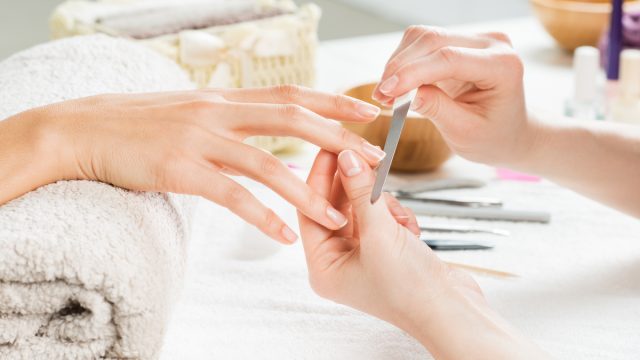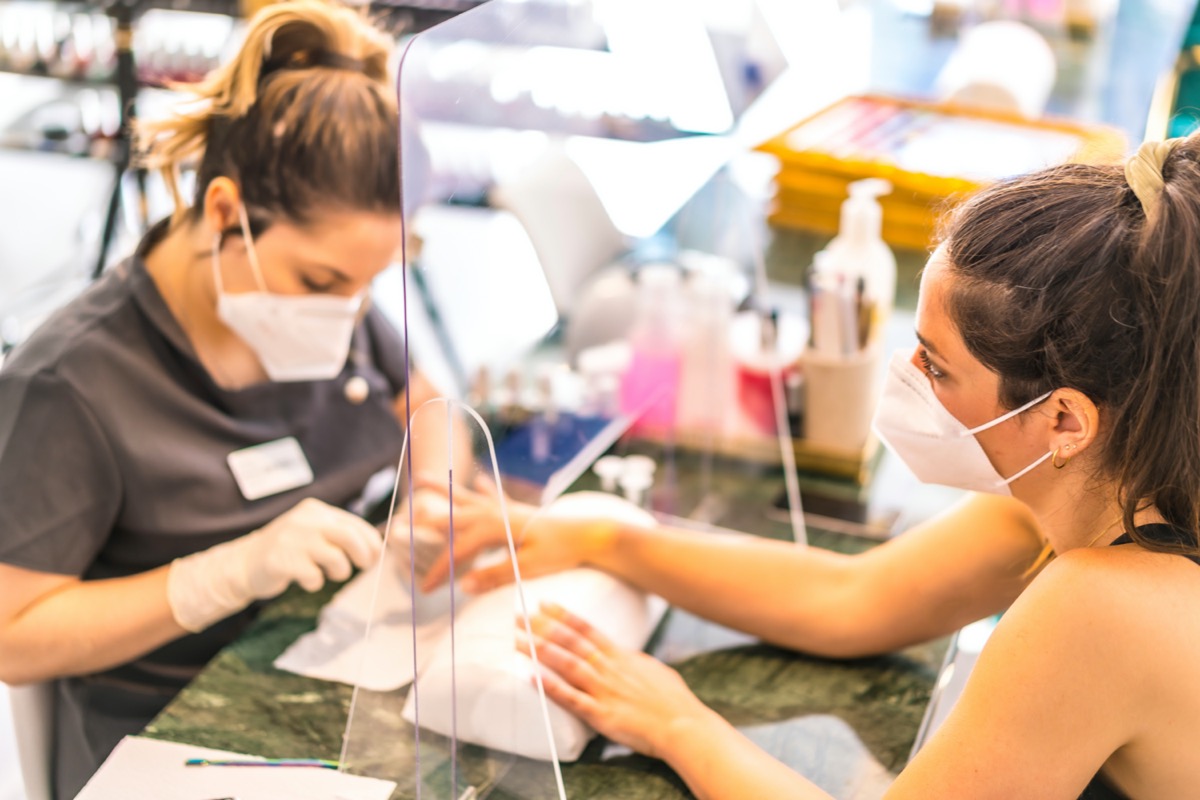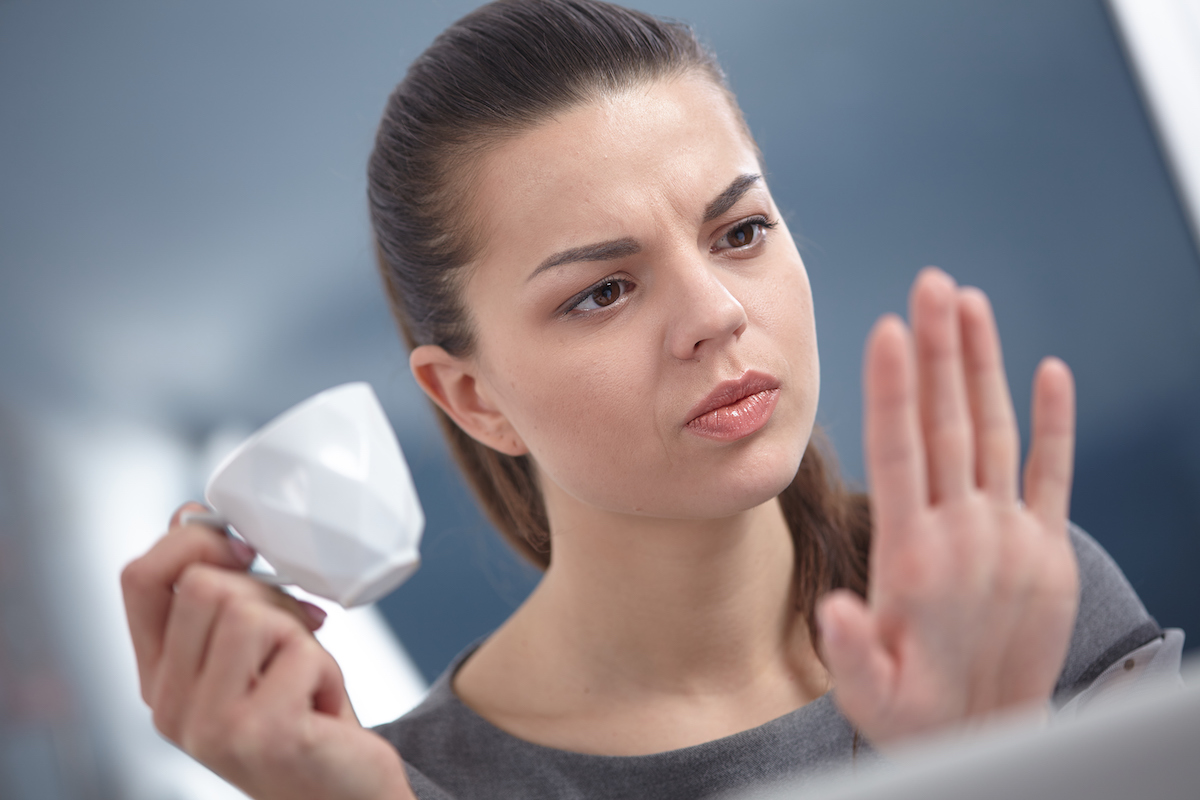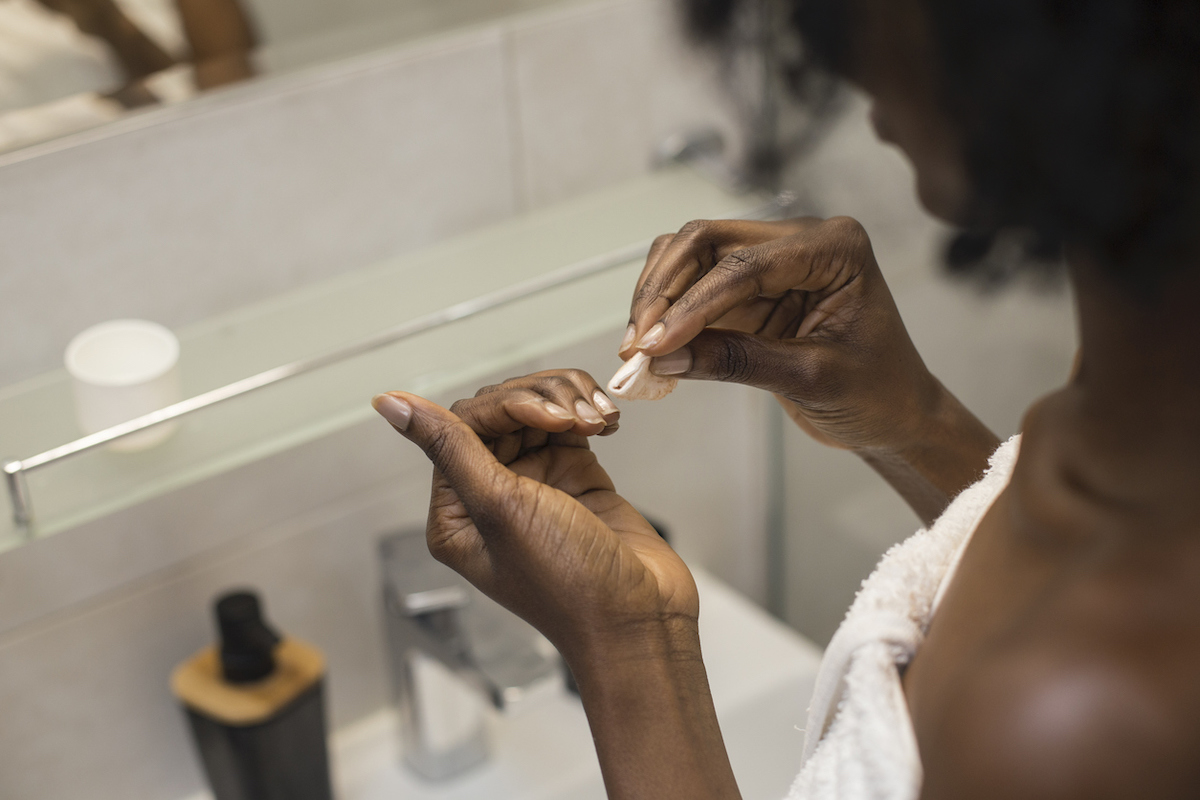Never Let Your Manicurist Do This, Beauty Experts Warn

Nothing is more refreshing than a trip to the nail salon. Whether you’re thrilled by the prospect of new nail art or the mini neck massage at the end of your session, getting a manicure offers you the space to sit back, relax, and indulge in a healthy dose of self-care during your hard-earned down-time. However, not every treatment that’s available at your local nail salon is necessary. In fact, some can be downright dangerous. Read on to discover the one thing you should never let your manicurist do.
RELATED: If You’re Over 50, Stop Wearing This Nail Polish Color.
Never let your manicurist cut your cuticles at the nail salon.

Some of us see our manicurists more often than we see our closest friends—and understandably trust them with everything from choosing the most flattering nail colors to offering their two cents on our weekly workplace drama. However, if there’s one thing you shouldn’t leave in their well-equipped hands, it’s your cuticles. Why? Because in most cases, the cuticles don’t need to be cut—and doing so can be risky business.
It turns out, the cuticle is a natural feature of the nail and serves a critical function. “The cuticle connects the skin to the nail to protect the nail and skin from different kinds of infection,” says board-certified podiatrist Nelya Lobkova. “If the cuticle is cut excessively and there is a separation between the nail and skin, a fungal or bacterial infection can get in under the nail or into the skin.”
According to Cynthia Bailey, dermatologist and founder of Dr. Bailey Skin Care, one of the most common infections is paronychia. Paronychia can lead to serious pain and require treatment using antibiotics or surgical lancing. It can also permanently damage the cells that form your nail. “Once damaged, the cuticle may never reform to create a good seal again, exposing you to repeated bouts of paronychia,” she says.
Cutting the cuticle is illegal in some states.

Cutting the cuticle inside a salon is against the law in several states, including New York, Arizona, Idaho, and Mississippi. In these states, the practice is considered a surgical procedure. Cecilia Waters, licensed cosmetologist and beauty blogger at The Beauty Benchmark, notes this restriction is due to the fact that there is always a risk of accidentally cutting a client in a way that can lead to infection. “This is especially true if tools aren’t properly cleaned, sanitized, and sterilized,” she says.
RELATED: For more beauty advice delivered straight to your inbox, sign up for our daily newsletter.
See a doctor if you suspect a cuticle issue.

Of course, there are times that your cuticles do need professional care. However, those instances should be assessed by a doctor or dermatologist—not a manicurist. “Occasionally, what feels like an ingrown nail in the upper corners of the nail is actually excessive cuticle or skin growth,” says Lobkova. She suggests visiting a doctor to rule out infection if you notice any pain, swelling, or redness around the nail.
Create a cuticle-care routine.

If you’re craving the look of a cut cuticle, don’t fret. There are ways to achieve a freshly manicured appearance in the salon or at home, without a pair of clippers. “The best cuticle care routine will involve some form of exfoliation, pushing back of the cuticle, and moisturizing the area,” says Waters. You can let your manicurist gently push back your cuticles or you can do it yourself.
First, start with clean hands (post-shower is prime time for your cuticle routine, as the skin is clean and supple.) Next, use a towel to gently rub the cuticles and push them back. You can also use a manicure brush and manicure stick for this step. The last step should always be to apply cuticle oil to lock in moisture. “Make sure to apply this under the nail as well,” she says. “A cuticle oil with a brush applicator makes this very easy.” For best results, apply once or twice a day and moisturize your hands as needed.
Soon, you’ll have a nail-care routine that rivals weekly mani-pedis at the salon.
RELATED: If You See This on Your Nails, It Could Be a Tell-Tale Sign of Diabetes.